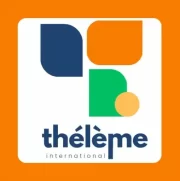How a diverse organization can overcome biases?

In a previous post on personal biases in a diverse workplace, I illustrated the Affinity bias with the coffee breaks. Writing this example, the memories of two European Schools I worked in years ago remerged. In the first one located in the UK, indeed, it was another era!-, high bistro tables and some armchairs were available. As long as I recall, mingling among nationalities was standard. However, the story was quite different in the second European School I joined later on. Some massive tables were altogether desks and coffee tables. Besides, they were allocated by language. One day, I joined the table of colleagues whose language was familiar and with whom I had close collaborations. That day, I learned that invisible walls could build inexpugnable fortresses. I retreated.
While the importance of space considerations is undeniable, recruiting and promotion processes are even riper for biases. How can organizations mitigate their harmful effects?
Biases at the organizations should address
If overcoming biases at a personal level demands efforts, a strong commitment and persistence are required to reap visible improvements at the organizational level.
> From the executive model to entry-level performance reviews
It might seem self-evident, but top management sets the targets, implements, and monitors programs and -and this is where it hurts- lead by being diverse. The multi-year study published by the Alliance for Board Diversity, in collaboration with Deloitte, demonstrates a slow change of diversity in the US board rooms.
Companies are less likely to provide unconscious bias training for employees who participate in entry-level performance reviews than senior-level reviews.
McKinsey & Company study on gender diversity
The 2019 McKinsey & Company study on gender diversity reveals that senior management levels receive more attention regarding diversity. “Companies are less likely to provide unconscious bias training for employees who participate in entry-level performance reviews than senior-level reviews.”
> The case of bias training
Programs that aim at overcoming biases rely on training. Before going further on that matter, I must confess that I am biased at stratospheric levels here, having trained trainers for years. One of the main advantages of training programs is that they offer comfort. First, they provide evidence that a company espouses diversity. Secondly, the knowledge delivered does not require sophisticated assessment. The already mentioned McKinsey & Company study reports the positive effects of bias training. But in the long run, one-shot training sessions, even the most transformative ones (see Sidebar What is a transformative training?), cannot immunize against heuristics. In their 2016 HBR article, Frank Dobbin and Alexandra Kalev strongly argue that bias training fails at increasing diversity over the years.
|
What is transformative training? To do so, the training must be: |
So, if sole training does not deliver the expected results regarding diversity, what other measures can be taken by organizational to prevent biases from polluting hiring and reviews?
Proven measures for hiring and assessing
Research has identified multiple steps to flag biases, reveal the hidden and avoid self-reliance, instinct, or even « culture fit.» Some of those measures are well known: data monitoring and implementing standardized procedures and transparent criteria that are applied equally to all candidates, whatever their gender, education, age, cultural background, physical abilities. The lack of time and distaste for novelty —which, gently put, are no less than a lack of commitment and consistency- prevents companies from using less traditional techniques such as:
. Designing a rating scale and sharing it before the start of the process: from my experience, the design part is undeniably demanding, but the initial effort pays dividends not only during the hiring and evaluation process but also during daily management routines,
. Inviting a third party when discussing candidacies: social accountability accomplishes miracles when it comes to encouraging objectivity.
. Diversifying hiring interviews with panels and case studies: such techniques are rarely put in place but provide a thorough assessment of soft skills.
A systemic approach to communication
Let’s now consider a company that already has bias-free hiring and promoting pipeline, which further steps can prevent the persistence of biases from endangering effective communication and agility. The underlying principle here is to encourage dialogue and mutual comprehension across diverse social groups. Again research has shown the efficiency of focus groups where different hierarchal levels and various departments are involved, which have to address practical issues and propose some guidelines. My former coffee breaks’ rigidity would have been an excellent starting point for a discussion on the language barrier. Another way to rebuke blind spots and biases is through surveys.
Of course, more generally, a working culture that fosters speaking up at the team level and outside the inner circle acts as leverage for long term results. Ensure that all employees, those from minority groups and others, know where and to whom they can safely report suspicion of unfair treatment. Finally, consider informal gatherings as an efficient way to collect pieces of information and observe how smoothly, or not, employees engage with each other.
It seems needless to mention that informal events outside of working hours where alcohol is abundant are highly ripe for bias! At this point, you might wonder if I have an issue with beverages. As long as inclusion and cooperation stay at the core of any social events, I go for it. Cheers!
Lorem ipsum dolor sit amet, consectetur adipiscing elit. Ut elit tellus, luctus nec ullamcorper mattis, pulvinar dapibus leo.



